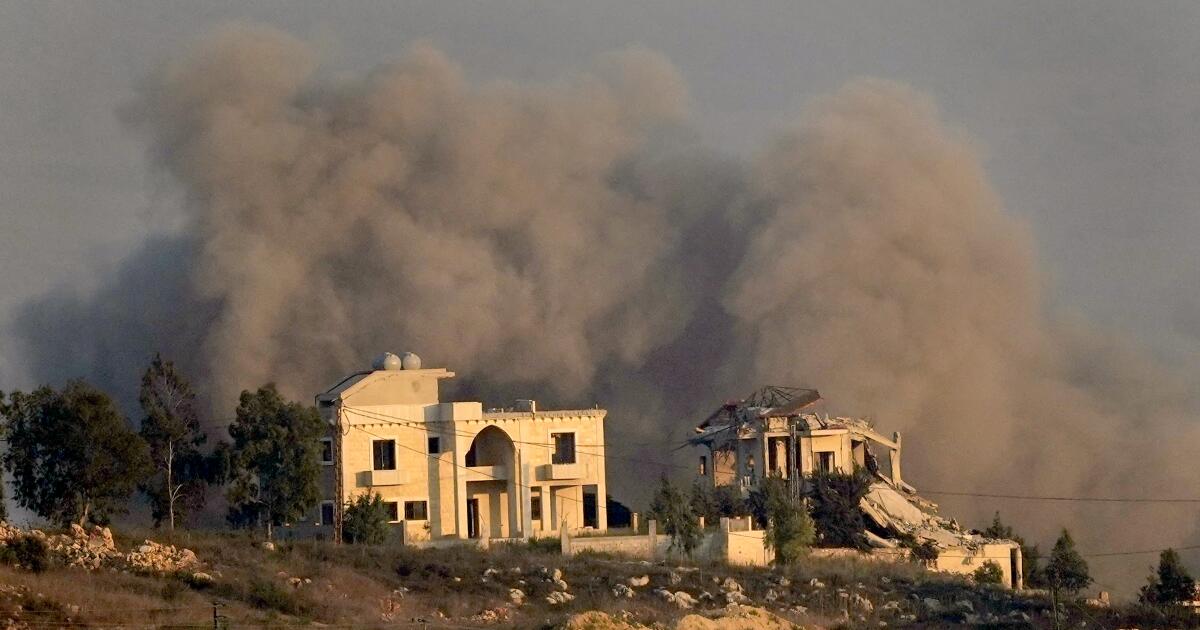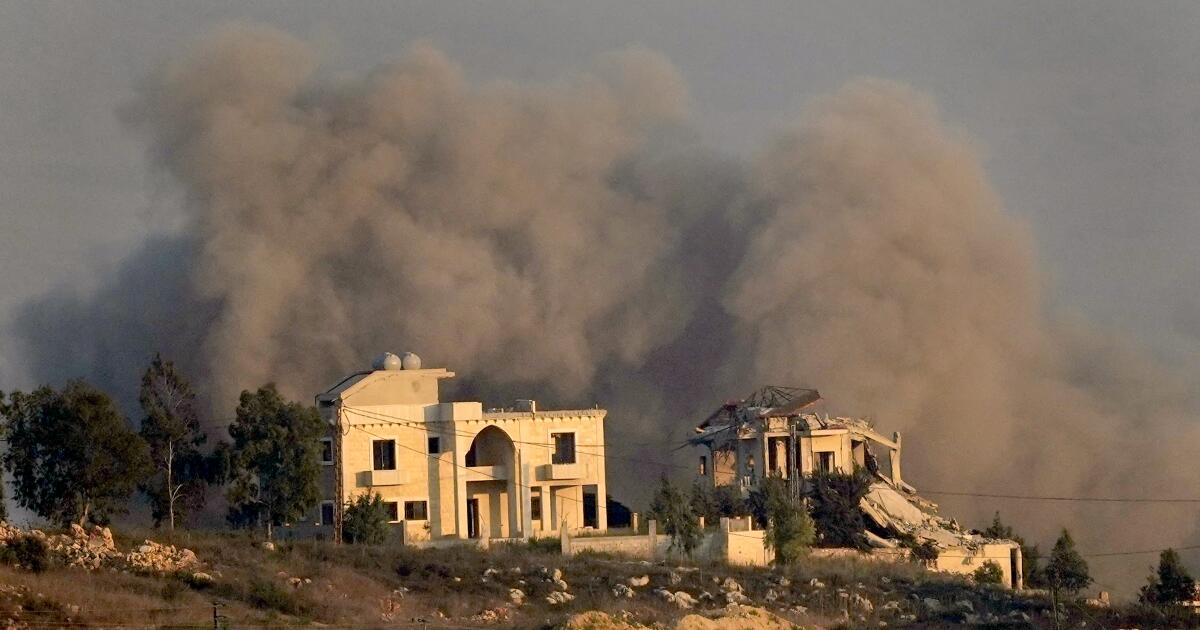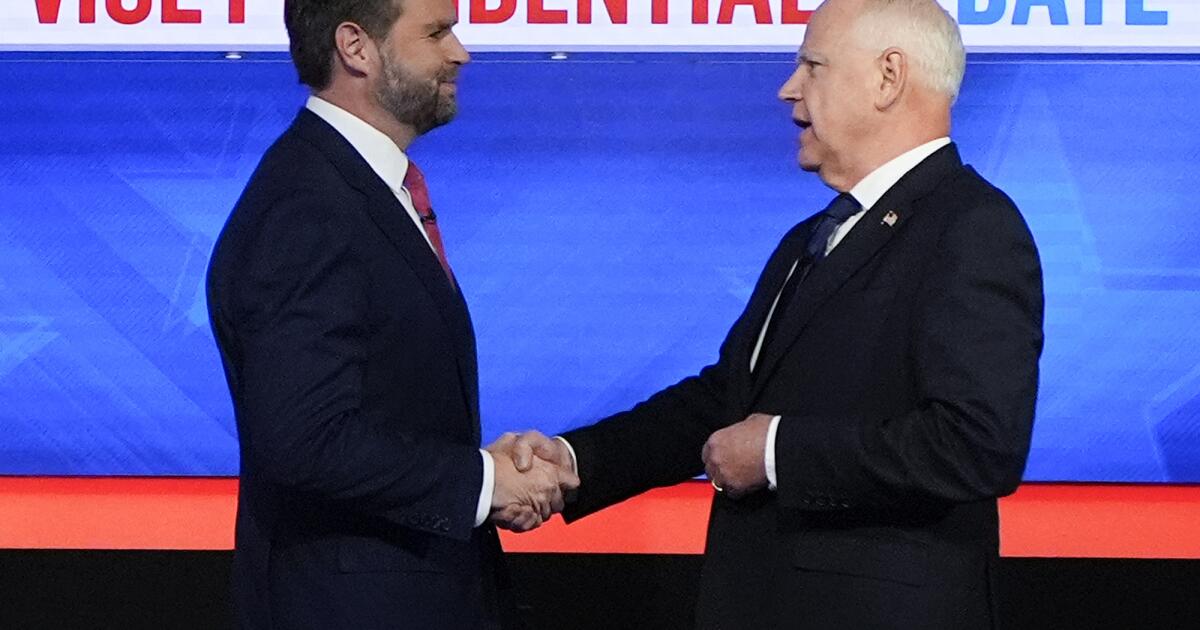
BEIRUT —
Thousands of its members wounded and at least two dozen killed when their pagers and walkie-talkies exploded. One of its key operatives assassinated in an airstrike that pulverized an eight-story building. Its arsenal presumably decimated in an all-out air assault that left hundreds dead.
Hezbollah, the Lebanese Shiite militant group backed by Iran appears to have hit the lowest point in its more than 40-year history.
Hezbollah began lobbing rockets into northern Israel last October in what it says is a solidarity campaign with Palestinians in Gaza. Israel responded in kind, and though the fighting has caused mass displacements — 90,000 people driven from their homes in Lebanon and 60,000 in Israel — both sides calibrated their combat to avoid an all-out conflagration.
Those days appear to be over. In the last week, Israel has refocused its military efforts on Hezbollah and ramped up its attacks in an attempt to pummel the group into a diplomatic solution — even at the risk of a broader regional war that could draw in Iran and the U.S.
On Tuesday, Israel pressed on with airstrikes, with its military saying it had struck some 1,500 targets and dropped around 2,000 munitions in 24 hours. The attacks devastated wide swaths of southern and eastern Lebanon.
The death toll on Monday alone was at least 558 — including 50 children, 94 women and four medics — with an additional 1,835 people wounded, according to Lebanon’s health minister, who did not specify how many were Hezbollah operatives. All told, it was the deadliest day for Lebanon in decades.
That attack came days after the mass detonation of the hand-held communication devices that Hezbollah relied on to evade Israeli spyware. The explosions killed 37 people — including two children — created widespread fear and incapacitated thousands of Hezbollah’s rank-and-file members, officials and administrators.
The large strike Friday in the heart of the Hezbollah-dominated southern suburbs of Beirut felled a senior top commander, 15 elite commandos and more than twice that number of residents.
Hezbollah appeared unexpectedly vulnerable, outmaneuvered at every turn by an Israeli military with a seemingly insurmountable technical edge.
Up until a few months ago, Hezbollah leaders routinely touted a strategy of deterrence, promising that their ability to attack Tel Aviv and other Israeli cities would dissuade Israel from striking the Beirut suburbs the group dominates.
But those warnings now look empty as Israel has pursued high-ranking Hezbollah operatives in the Lebanese capital, spurring repeated vows of vengeance but not much actual retaliation.
On Tuesday, an Israeli airstrike on the Ghobeiry neighborhood targeted Ibrahim Qubaisi, who according to the Israeli military commanded Hezbollah’s missile and rocket force. The attack killed six people and wounded 15 others, according to the Lebanese health ministry. It remains unclear if Qubaisi was among the casualties.
Israel’s strategy has been described in the local press as “escalate to de-escalate.” It’s too early to say if it will help achieve what Israeli leaders say are their major goals: changing the balance of power with Hezbollah and allowing displaced residents to return to northern Israel.
Although experts believe Hezbollah has sustained painful blows to its communication abilities, command chain and arsenal, the group was nevertheless able to fire hundreds of projectiles into Israel on Monday and Tuesday. It also announced on Tuesday a new rocket, the Fadi 3, which it used for the first time to strike a military base east of Haifa. Those attacks left two people with shrapnel wounds, according to Israeli medical services.
Meanwhile, Hezbollah leaders have reiterated what they call the “support front” with Palestinians, vowing that they will continue to attack Israel as long as the war in Gaza continues. Hezbollah head Hassan Nasrallah said in a speech last week that the group would welcome an Israeli ground invasion of southern Lebanon.
“The measures [the Israelis] have taken to hide, conceal and move make it difficult to detect them,” he said. “However, if they come to us, they are welcome.
“What they consider a threat, we consider an opportunity.”
Less clear is what Hezbollah’s allies will do. Considered a terrorist organization by the U.S. and Israel, the group is the crown jewel of an Iran-backed network of militias, a “ring of fire” around Israel that includes Hamas and the Houthis in Yemen, along with factions in Syria and Iraq.
In an interview with CNN on Tuesday, Iranian President Masoud Pezeshkian said his government would continue to support Hezbollah.
“Hezbollah cannot stand alone against a country that is being defended and supported and supplied by Western countries, by European countries and the United States,” he said.
For the Lebanese, the war comes at an inopportune moment. Many still suffer the impact of a five-year economic crisis that tanked the currency to almost 1% of its value. Others oppose Hezbollah on ideological grounds.
Meanwhile, communities in several parts of Lebanon that have have long supported Hezbollah have suffered in ways unseen in decades.
On Monday, after a missile hit a house in their village — which is called Maaroub and sits 12 miles north of the border — kindergarten teacher Laila Ashqar and 26 relatives piled into three cars and fled, joining tens of thousands of others in an exodus. They reached Beirut more than seven hours later — the trip normally takes 1½ hours — and scattered into various shelters.
Ashqar and her immediate family landed in a classroom of a hotel management institute, with desks piled to one side and a few old mattresses on the floor.
“Maaroub? Nothing is left standing,” Ashqar said, taking a drag from a cigarette.
Before the sudden turn of events, she explained, she and her family had felt like spectators to the hostilities and downplayed the dangers.
“We would sit and drink coffee, watching the two sides trade fire,” she said. “Now it’s war.”



